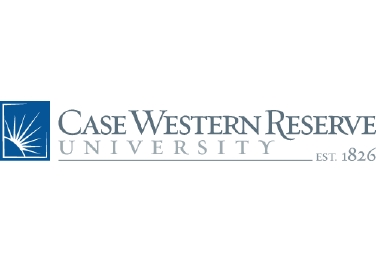Neuroimaging During Pure Oxygen Breathing
| Status: | Completed |
|---|---|
| Conditions: | Neurology, Psychiatric |
| Therapuetic Areas: | Neurology, Psychiatry / Psychology |
| Healthy: | No |
| Age Range: | 18 - 55 |
| Updated: | 7/26/2018 |
| Start Date: | October 2, 2017 |
| End Date: | May 2, 2018 |
Hyperoxia: An Unrecognized Mechanism for Inducing "Hypoxia-Like" Symptoms
The investigators will conduct a non-randomized clinical trial to examine the effect of pure
oxygen breathing on the brain. The study will compare cerebral blood flow, cortical
electrical activity, and cognitive performance in 32 persons during room air (21% oxygen)
breathing and pure oxygen (100% oxygen) breathing. Subjects will be used as their own
controls. The investigators aim to:
1. Determine whether breathing 100% oxygen changes blood flow through the brain. The
investigators will learn whether brain blood flow is increased, decreased or stays the
same.
2. Determine if changes that might occur in brain blood flow are also accompanied by
changes in the brain's electrical activity (EEG).
3. Learn whether changes in the speed at which the brain processes information (cognitive
function) accompany changes in brain blood flow and electrical activity that may be
seen.
oxygen breathing on the brain. The study will compare cerebral blood flow, cortical
electrical activity, and cognitive performance in 32 persons during room air (21% oxygen)
breathing and pure oxygen (100% oxygen) breathing. Subjects will be used as their own
controls. The investigators aim to:
1. Determine whether breathing 100% oxygen changes blood flow through the brain. The
investigators will learn whether brain blood flow is increased, decreased or stays the
same.
2. Determine if changes that might occur in brain blood flow are also accompanied by
changes in the brain's electrical activity (EEG).
3. Learn whether changes in the speed at which the brain processes information (cognitive
function) accompany changes in brain blood flow and electrical activity that may be
seen.
The investigators will conduct a two-arm crossover design clinical trial to compare the
effect of room air breathing (21% inspired oxygen) with pure oxygen breathing (100% inspired
oxygen) on brain blood flow and cortical electrical activity. The study involves a one-time
data collection taking place at University Hospitals Cleveland Medical Center on the Case
Western Reserve University campus in Cleveland, OH. The investigators will perform
neuroimaging (MRI) with electroencephalographic (EEG) cortical network mapping and cognitive
assessments in all participants during room air breathing and again while breathing 100% pure
oxygen. Oxygen will be delivered through a non-rebreather mask. Arterial blood partial
pressure of oxygen (PaO2) will be measured twice, from arterial blood samples drawn during
breathing room air prior to the MRI scan and again after 30 minutes of breathing 100% oxygen
immediately following neuroimaging. Thus, the investigators will be able to determine if
breathing pure oxygen may temporarily change brain blood flow and breathing, leading to
changes in cognitive status such as euphoria or slowed reflexes. Information gained in this
study may have direct operational relevance by helping us to understand one potential cause
of "Unexplained Physiologic Events" that are reported in some aircraft pilots when flying at
high altitude. Information gained could lead to development of new gas mixtures for use by
personnel working in low oxygen high altitude environments.
effect of room air breathing (21% inspired oxygen) with pure oxygen breathing (100% inspired
oxygen) on brain blood flow and cortical electrical activity. The study involves a one-time
data collection taking place at University Hospitals Cleveland Medical Center on the Case
Western Reserve University campus in Cleveland, OH. The investigators will perform
neuroimaging (MRI) with electroencephalographic (EEG) cortical network mapping and cognitive
assessments in all participants during room air breathing and again while breathing 100% pure
oxygen. Oxygen will be delivered through a non-rebreather mask. Arterial blood partial
pressure of oxygen (PaO2) will be measured twice, from arterial blood samples drawn during
breathing room air prior to the MRI scan and again after 30 minutes of breathing 100% oxygen
immediately following neuroimaging. Thus, the investigators will be able to determine if
breathing pure oxygen may temporarily change brain blood flow and breathing, leading to
changes in cognitive status such as euphoria or slowed reflexes. Information gained in this
study may have direct operational relevance by helping us to understand one potential cause
of "Unexplained Physiologic Events" that are reported in some aircraft pilots when flying at
high altitude. Information gained could lead to development of new gas mixtures for use by
personnel working in low oxygen high altitude environments.
Inclusion Criteria:
1. Persons recruited from currently approved Human Subject Panel for high altitude
studies at Wright Patterson Air Force Base, Dayton, OH. Volunteers will have
documentation of past exposure to hypobaric conditions, either from past high-altitude
flight, as hypobaric chamber personnel, or as participants in previous/current high
altitude studies
2. Height 152.5-195.5 cm, weight 40-135 kg.
Exclusion Criteria:
1. Persons who have contraindications to MRI such as cardiac pacemakers, intracranial
aneurysm clips, metallic implants or external clips within 10 mm of the head;
implanted metallic devices such as pumps or previously implanted neurostimulation
devices; cochlear implants, defibrillators, pacing wires, body piercings that cannot
be removed, metal filings such as shrapnel, tattoos on the head and neck, or medical
conditions contraindicated for MRI safety.
2. History of claustrophobia
We found this trial at
1
site
Case Western Reserve Univ Continually ranked among America's best colleges, Case Western Reserve University has...
Click here to add this to my saved trials
